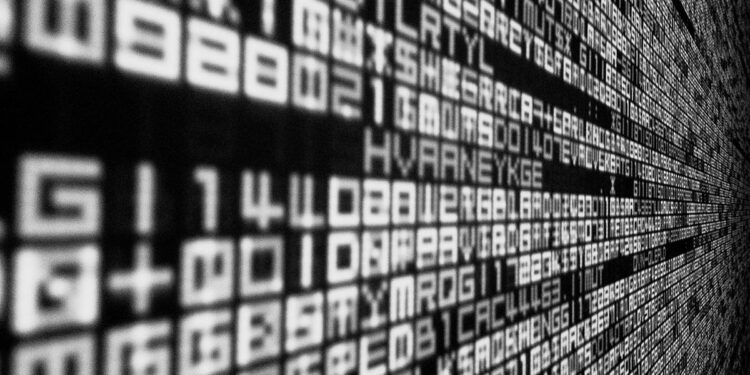With data generation happening at the rate of 2.5 quintillion bytes every day, we as internet users generated almost 1.7MB every single second in 2020. As more companies incorporate Big Data, Artificial Intelligence (AI), and more technologies into their products and services, we are invariably increasing data generation volumes.
Oftentimes, data involves confidential information that demands the preservation of anonymity. If you consider fields like medicine and science and research, humans are involved in a lot of processes like clinical trials, surveys, and more. Doctors and researchers often have to share confidential data with other researchers or associates for either verification or validation.
In such cases, maintaining the confidentiality of patients and respondents becomes critical. Even tech streams such as banking and finance are obligated to maintain the anonymity of users to a certain extent.
This is exactly why data de-identification becomes important and in this post, we will explore what it means and how it’s done. So, if you’re a tech enthusiast, a beginner data scientist, or an AI specialist, this post is just for you.
What Is Data De-identification?
Data de-identification is the process of separating an individual’s identity from a dataset. For instance, when a person’s medical records after a clinical trial have to be made interoperable, data de-identification takes care of enabling the sharing of only relevant information to other stakeholders in the ecosystem. This includes the elimination of values or attributes like –
- The subject’s name
- Their contact details
- Gender
- Physical address
- Any distinct identifiers like birthmarks, scars or elements that could help in the identification of the individual and more
What Do You Need To Know About Data De-identification?
It’s A Mandate
Data de-identification is not a practice but a regulation – a mandate that has to be strictly adhered to. To elaborate further, The Health Insurance Accountability and Portability Act of 1996 Privacy Rule dictates organizations and institutions to de-identify the data they collect to comply with their regulatory obligations.
The HIPAA even recommends two distinct methods to do this to establish a standard – safe harbor and expert determination methods. This is why most healthcare organizations spend quality time, effort, and money in de-identifying their datasets.
At this point, let’s also understand that data re-identification is a phenomenon, where the bits and pieces of information available to stakeholders can be assembled together to trace the identity of an individual. These two methods ensure this is eliminated as much as possible.
Safe Harbor Method Vs. Expert Determination
Like we mentioned, the HIPAA recommends two distinct data de-identification methods.
Safe Harbor
This method demands the removal of close to 18 unique identifiers from a dataset that could be used to re-identify data. This method ensures that it is next to impossible to trace the identity of an individual with residual information.
Expert Determination
This deals with the application of scientific and statistical principles and rules to a dataset to ensure the risk involved in data re-identification by a recipient is the bare minimum.
Data De-identification Is Beyond Personal Data
So far, we’ve been focussing on the information associated with the identity of an individual with a dataset. However, data de-identification is beyond that. Though most cases are related to individual identity, not all cases do. There are other scenarios, where data de-identification helps separate an entity from a dataset. These include:
- Businesses, organizations, and companies who participate in surveys and intend to be anonymous
- Environmental agencies often want to de-identify data pertaining to endangered species
- Mining companies also eye on keeping locations of mineral deposits hidden by de-identifying location details and more
The use cases of data de-identification are aplenty and vary as it moves from one industry to the other.
How To De-identify Data?
The data de-identification process involves a systematic approach. So far, you’ve been understanding what it is and why it is crucial. Now, let’s dive into how you could go about de-identifying your data.
- Data de-identification is often done with the help of smart tools to automatically identify unique identifiers such as names, email addresses, gender, date and year of birth, and more sensitive information.
- There are two plausible events in data de-identifications. While data is completely removed from an element sometimes, it is also encrypted with a code often to ensure only those with authorized access can view the contents of the data.
While this looks neat and simple, there’s a catch here.
When stakeholders work on making crucial data invisible to unauthorized people, sometimes, they need the sensitive information they just deleted in the future for reference.
In such cases, what does a professional do? This is where complex legalities, regulations, guidelines, and more come into the picture and assist the involved stakeholders to re-identify data in the most confidential ways possible.
Wrapping Up
So, this is everything you need to know about data de-identification or data anonymization. If you have to comply with data confidentiality laws and are looking for ideal ways to de-identify data, look out for experts and companies that take care of data de-identification strategies. Since this is crucial and involves a fair chance of repercussions, collaborate with the best in the industry.
Author Bio
Vatsal Ghiya is a serial entrepreneur with more than 20 years of experience in healthcare AI software and services. He is the CEO and co-founder of Shaip, which enables the on-demand scaling of our platform, processes, and people for companies with the most demanding machine learning and artificial intelligence initiatives.







